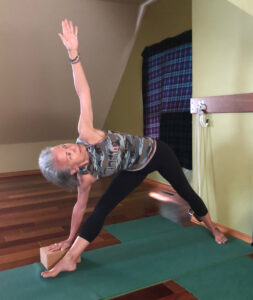It is safe to say our world of business, economics, and politics is drastically changing. I think most of us agree that the challenges we faced early in our careers look nothing like the challenges we face today.
Point of fact, when I began my consulting career in 1988, I had the capacity (skills and knowledge) to build that business as a solo entrepreneur. Twenty-five years later and two years after transitioning my consulting business into a new on-line company (Right to Joy), I can attest I no longer have the skills and knowledge to go it alone. With our world’s increasing complexity and interconnectedness, what is required to create and grow a successful business today is beyond the capacity of one person, even one organization. Collaboration has become the new competitive advantage.
The illiterate of the 21st century will not be those who cannot read and write,
but those who cannot learn, unlearn, and relearn. Alvin Toffler
In a world still using war to solve conflict, finessing our collaboration skills requires new attitudes and new knowledge. Heading into my third year of approaching business from an “everything is collaborative” perspective, I plucked out the following key ingredients that enhanced my own success. These clues to better collaboration emerged from a number of co-authored book projects. What supplied most of my data is an alliance involving six North American members of the Socio-Technical Systems Roundtable (Doug Austrom, Don De Guerre, Craig McGee, Bernhard Mohr, Carolyn Ordowich and Joe Norton). This virtual team, from different locations across North America, began its collaboration in 2010 with the intent of producing a book on designing adaptive enterprises from a socio-technical systems perspective. The list below details some of our learning.
1. Define your shared purpose and shared value. With seven uniquely different needs, motivations and locations, it was vital to understand why we would want to come together and stay together until the book was complete. Primarily we wished to enhance our personal learning and development, work with people we respect on something we care about and feed the field of socio-technical systems design. As change catalysts, educators and organization design consultants, we recognized working together would accomplish what we could not do alone.
2. Take virtual and face-to-face time to build trust. I have known most of my six colleagues for several years, which might suggest trust already existed, particularly given we also share similar values. Frankly, this is an erroneous assumption, and one constantly made by virtual and face-to-face collaborators. Furthermore, we are all products of our cultural conditioning and develop our own behavioural patterns to aid us in navigating social interactions. Where trust and openness are not established, these personal behavioural patterns can be easily misinterpreted as grabs for power, signs of disrespect or manipulations of self-interest. In order to nurture positive human dynamics, we used virtual interactions to convey information and face-to-face interactions to continually grow our trust and converge our conceptual thinking.
3. Integrate intuition and intellect. Those of you familiar with the Sensing and Intuiting scales of Myers-Briggs Typology Indicator (for a free online assessment) will recognize them as preferred ways of gathering information for decision making. Those preferring intuition use their ‘sixth sense’ or gut instinct to understand something immediately without the use of conscious reasoning. Those preferring conscious reasoning use their five physical senses (sight, sound, smell, taste and touch) to collect observable data. In today’s complex, interconnected world, both thriving (innovating around never-before-seen challenges; fulfilling one’s potential) and surviving (optimizing core efficiencies; feeding one’s belly) are equally significant. Therefore, leveraging both strengths — intuition’s creativity and intellect’s quality improvements — is a core requirement. It is this integration of ‘speedy iterative’ and ‘good enough for now’ designs that wins market share.
4. Openly Share. Those of us in the consulting and teaching professions maintain the best way to learn is to teach. The initial research and development on any new topic of learning provides an abundance of knowledge, however, sharing it with others through various teaching opportunities provides feedback to fine-tune the topic and deepen our own understanding. The free sharing of what we know pays forward what we have already received from others and feeds the field of study adding to what is yet to be known.
If I have seen further, it is by standing on the shoulders of giants. Isaac Newton
As we have witnessed in business, poor distribution, not poor product, is the number one cause of failure. The more we openly share our knowledge, the more we tap into advertising and sales markets without having to openly sell. And, it is feedback from these markets that will continually enhance the quality of product.
5. Coordinate the coalition. Whether your collaboration is a seven-person writing team, a supply chain or a coalition of organizations (issue-based eco-system), agreeing on what coordination (structure) is required to nurture and continue the productive relationships is vital. As my writing co-horts and I found, we each had developed unique work processes, which had the potential to (and did) conflict with those favoured by other collaborators. And, of course, working virtually has its own work design, which needs to be explicitly stated. In the case of these as well as more complex connections, what requires coordination and thus gets designed is purpose, shared governance, distributed leadership, seamless working relationships, information capital, member capabilities and collective capacity.
Does this new attitude of collaboration seem too complex? Not when you realize its rewards — an explosion of creativity within a sanctuary of community.
With what creative idea could you use someone else’s help? How can you include others in order to innovate and create community?





